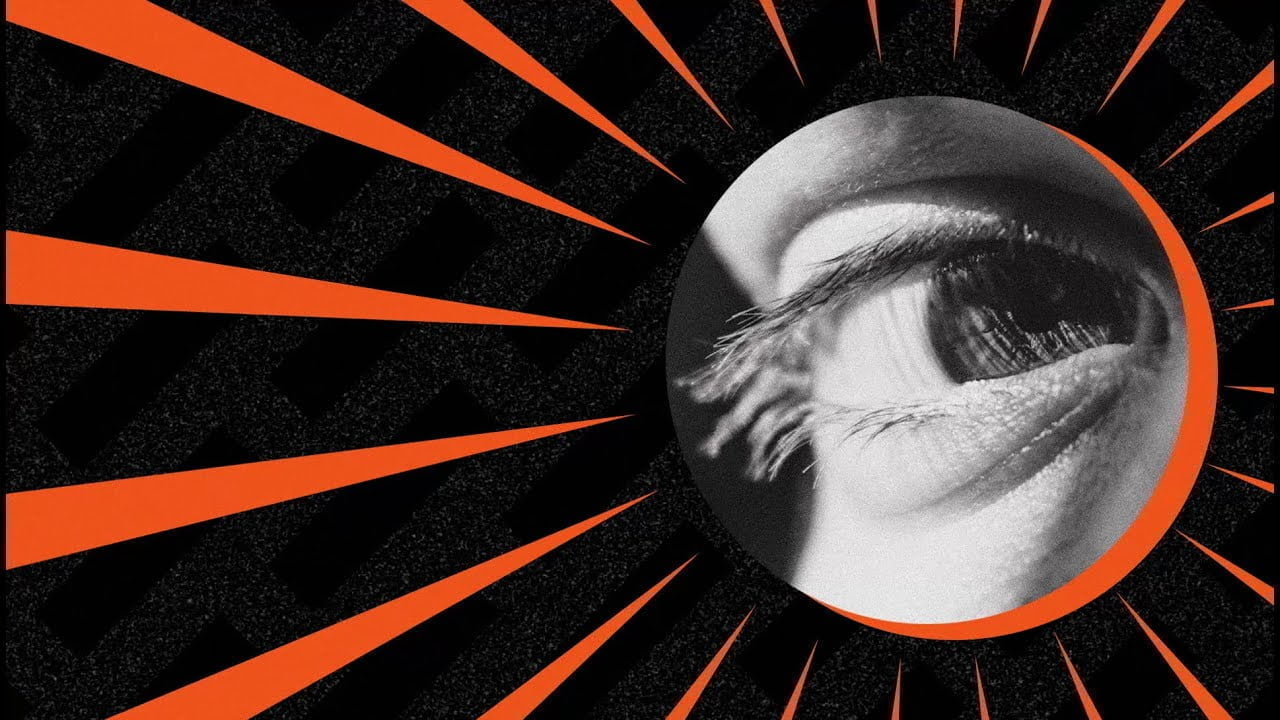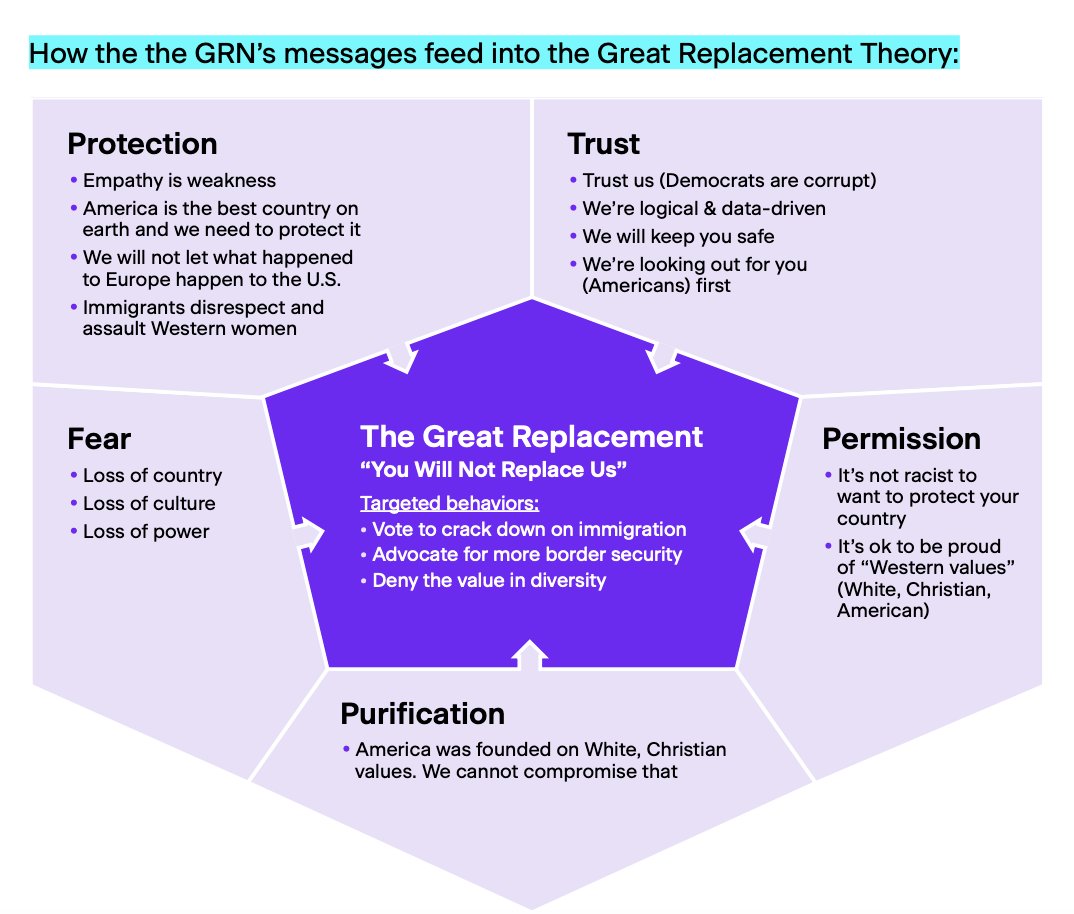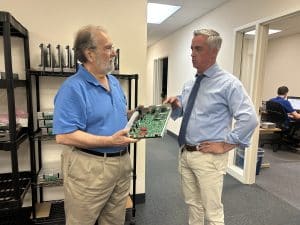This interview was originally published at the Border Chronicles newsletter. Subscribe to it HERE.
Shauna Siggelkow is director of digital storytelling at the nonprofit Define American. For the past three years, Siggelkow and other researchers have examined the growth and influence of anti-immigrant narratives and videos on YouTube. The organization’s new report, “Immigration Will Destroy Us” and Other Talking Points, which was released in April, reveals some disturbing findings, including that the white-supremacist “great-replacement theory” and other racist beliefs are being packaged as educational material and marketed to young viewers on YouTube.
These hateful messages can have deadly consequences as witnessed in the 2019 El Paso mass shooting and in Buffalo, New York, last weekend. Siggelkow talks about their key findings and efforts to counter great-replacement and other anti-immigrant hate rhetoric proliferating on social media.
I’m glad that you issued this report on the spread of the great-replacement theory in social media. It’s scary how large outlets like Fox News are mainstreaming white-supremacist ideology. But why did you focus on YouTube for this report?
We started with it because there was a really great study that came out of Data & Society in 2018, by researchers Alice Marwick and Rebecca Lewis, where they identified a network of alternative media on YouTube that was highly influential. When that report came out, we wondered, How does this relate to immigration? Also, YouTube is the second-largest search engine in the world after Google. It’s an important platform for media, and compared to Facebook and Twitter, it has less scholarship and research. So we decided it would be a good first platform for us to look at. But we definitely plan to look at other platforms in the future.
What were your key findings?
We discovered this well-funded network. We were familiar with the Tanton Network before this project, of course, because they’ve been around for decades. Their influence isn’t even primarily digital. They started in the late 1970s. What we discovered early on is that a lot of the narratives on YouTube are very consistent. They’re packaged in a consistent way. And they’re coming from consistent content creators. A lot of it from the Tanton Network and PragerU. What we saw quickly is that there’s a cohesive strategy, in terms of what the messages are and how they’re being presented.
Who is funding all this anti-immigrant and white-supremacist content?
That’s a good question. I know that the Wilks Brothers in Texas were early funders of PragerU. I’ll send you a list with the funders that we know of. [Here’s the list.]
What role does imagery and messaging about the border play in disinformation?
We do see a lot of imagery around the border. You know, portrayals of criminality associated with the border. In the content that, we studied it and broke it down into two central narratives. When we’re talking about the undocumented community, they were exclusively Latinx, you know, border-crossing criminals. And then when we were talking about the legal immigration system, it was Muslim asylum seekers who were secretly terrorists. These two racist, stereotypical tropes are very powerful for fearmongering. And that is why we kept seeing them again and again in this network of content.
Who benefits from the fearmongering?
We need to look at the folks producing the content. And we’re looking at, you know, the Tanton Network, which has groups that the Southern Poverty Law Center has designated as hate groups. PragerU is a far-right propaganda machine. They’re not only concerned with immigration, of course. They make content about all sorts of issues. But, you know, these two central content creators have agendas. They’re not viewing a pluralist future for this country. They really believe that Western values and Western civilization can be maintained only by strictly limiting or stopping immigration to this country. So the folks creating this anti-immigration content have a really cohesive vision for what they want for the country. And it’s based on white supremacy and white nationalism.
And so we see the rise of this great-replacement theory, which is actually a fairly old construct, right? That’s very much been embraced by Tucker Carlson on Fox News, and throughout this right-wing media ecosystem. Can you talk about that?
The concept isn’t revolutionary or modern. If you read Erica Lee’s book, for instance, America for Americans, which is the history of xenophobia in this country, you’ll see that the exact same talking points have been used throughout our country’s history to demonize immigrants. One of the central narratives in the great-replacement videos we saw is that there are conspiracies afoot from elites, or specifically Jews, to wipe out quote, unquote, white people.
These concepts aren’t new. It’s just that they’ve been packaged for the digital age in a very effective way. And I think that the challenge for us is to understand how those narratives are influencing voters and the American public and how they’re being packaged to reach them.
Are these videos influencing American voters and policy?
Yes, 100 percent. In our research we could see how immigration content on YouTube is shifting opinions and shifting actions in the real world. But it’s not even just our research. The University of Chicago did a study on the January 6 insurrection and found that the great-replacement theory was a common belief system of the people storming the Capitol. So we know that there are real-world impacts.
Generally, I think there’s still this idea that it’s really fringe and out there. But what we saw, and I think this is where media personalities like Tucker Carlson come in, is that it’s being packaged in this way that feels really logical, really innocuous, and really educational.
So a lot of folks, who I’m sure don’t associate themselves with white supremacy, are being fed these messaging tactics and don’t even know it. So I think it’s a really dangerous and really subtle narrative that’s spreading.
I’ve been writing about the border and immigration for a long time, and it feels to me now like narratives around the border are being weaponized. They’re being used to push autocratic rule in the style of Trump. What are the consequences of this type of rhetoric?
I think we’re still learning what the consequences are going to be. It’s obviously bad for our civic health and cohesion as a country. I think it also goes back to the basic information crisis that we’re living through. How do we function as a democracy if we can’t agree on basic facts? Democracies are based on compromise and debate. But if you’re living in alternative realities, how can you even have that conversation?
One of the things we also saw in our research is that the anti-immigrant network is a cohesive media ecosystem. And it doesn’t speak to the other conversations happening around immigration. We see a lot of documentaries and compelling personal narratives around this issue coming from the pro-immigration side. But that’s kind of a ship passing in the night when you watch the content on the other side, which is just really throwing scary statistics out there and formatting things to look like educational content. Those narratives just don’t even interact. So there’s no ability to have a debate.
So this right-wing media ecosystem is consistently stoking this message of fear and xenophobia, which is effective, right? And cohesive. How do you counter something like that?
That’s what we are trying to figure out. We’re looking for tools and mechanisms to have a more cohesive, clear narrative on the pro-immigration side. I think it’s going to take a lot of coalition work and collaboration. And I think it’s important that we have a better understanding of what the other side has been up to, and looking at their strategies and infrastructures, because we don’t have those infrastructures on our side.
From this research, we did create a style guide tool kit. One of our recommendations, for example, is if you’re hoping to reach white women living in the Midwest, and you know, they watch HGTV, work with influencers from HGTV, and make sure your content feels like it’s produced and has a similar aesthetic to the content that your demographic is watching.
What would a piece countering this network’s message look like?
Well, we’ve started making our own explainer videos. What we found is that the PragerU style is the most accessible to the movable middle audience. And yeah, they have a really powerful format and way to package their content. So we’ve been producing our own explainer videos in our own style, but using the research as a guidepost, and working with social media influencers, who we feel have audiences in the movable middle.
And what is the movable middle? Can you define it?
We define the movable middle as Americans who are neither very pro nor very anti immigration. They fall somewhere in the middle on this issue. And they’re a really important part of the population. They are somewhere around 19 percent of the population. We think they’re the audience that can really be influenced by something like PragerU videos.
And this right-wing anti-immigrant media ecosystem. Is it just growing bigger and bigger?
As YouTube grows, a lot of these channels are growing with it. In our research we saw that 83 percent of 18-to-34-year-olds watch YouTube at least a few times a week. And 44 percent watch multiple times a day. Another scary statistic is that 80 percent of those who watch YouTube rely on algorithms to feed them content. And it’s been well documented that the rabbit holes on YouTube are designed to get more and more extreme to keep viewers on the platform longer.
So that really gets into the infrastructures of tech and questions around editorial responsibility from these big tech companies like YouTube. The algorithm has a lot of power and plays a really big role in all these media ecosystems.








